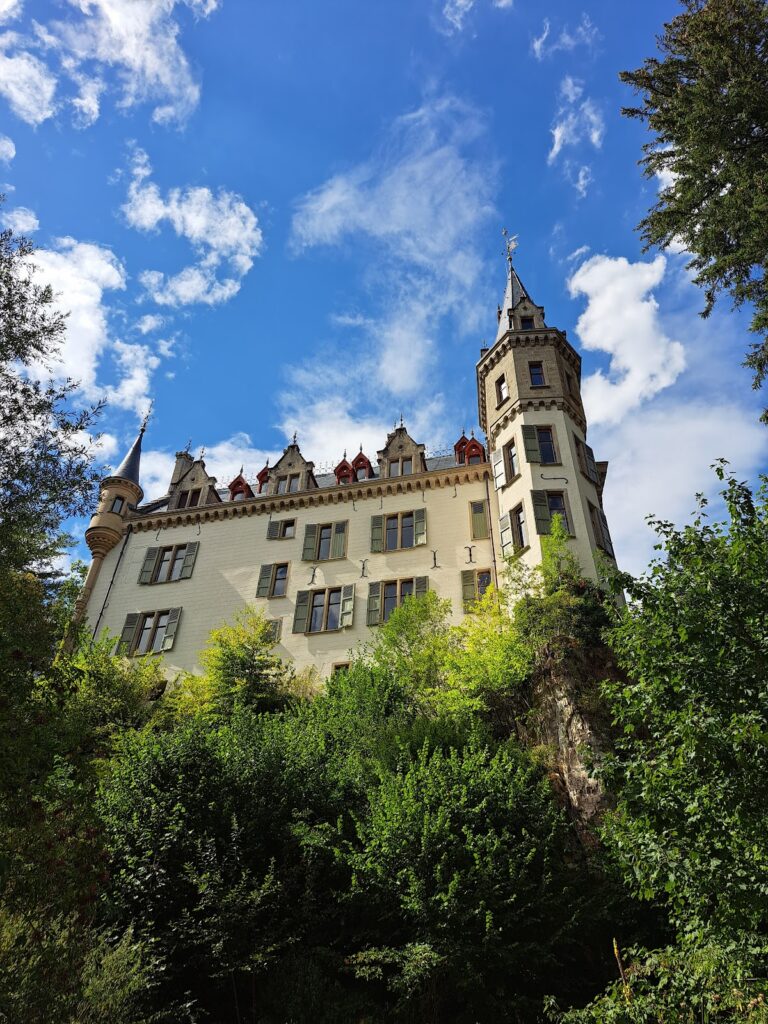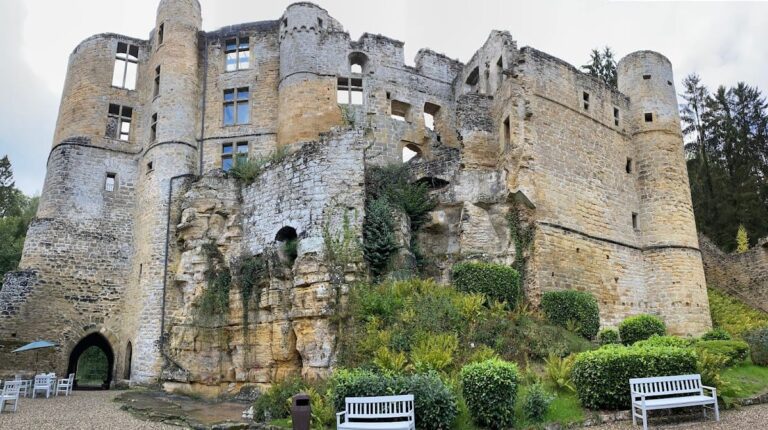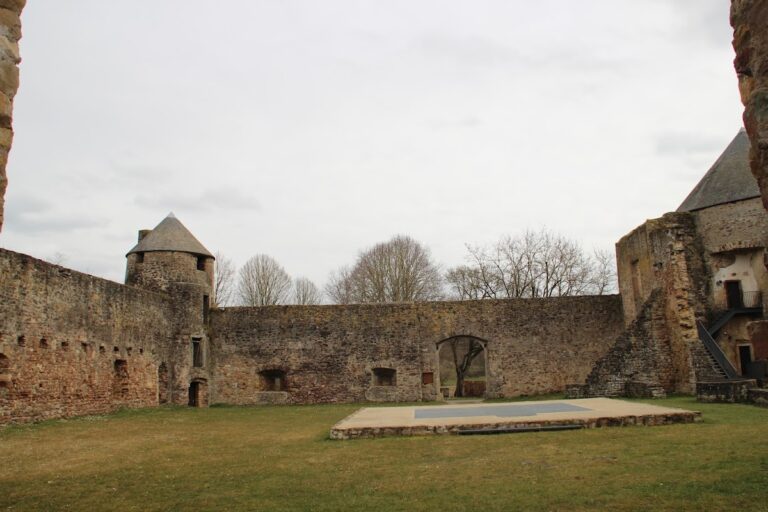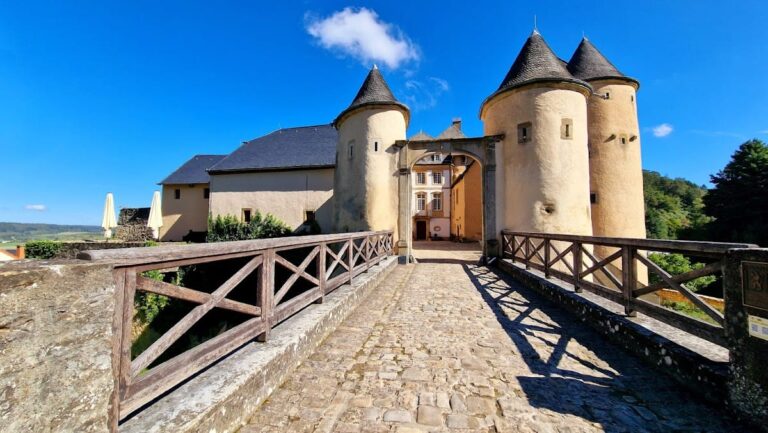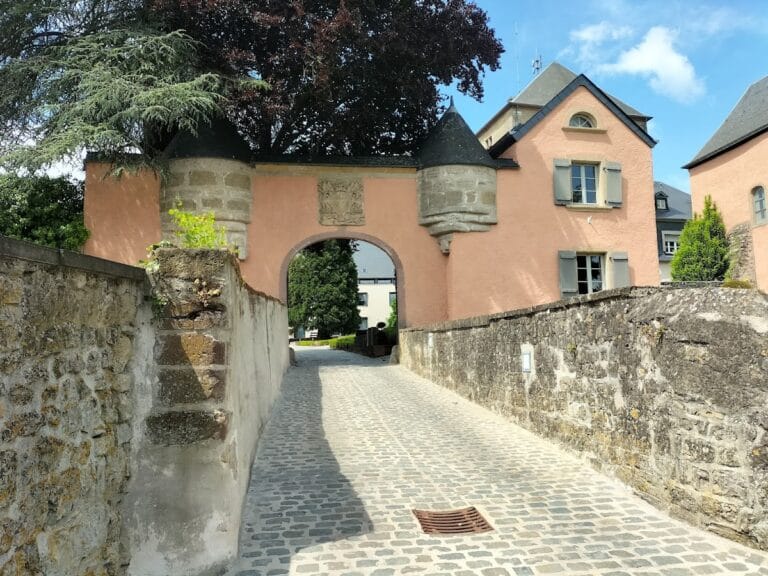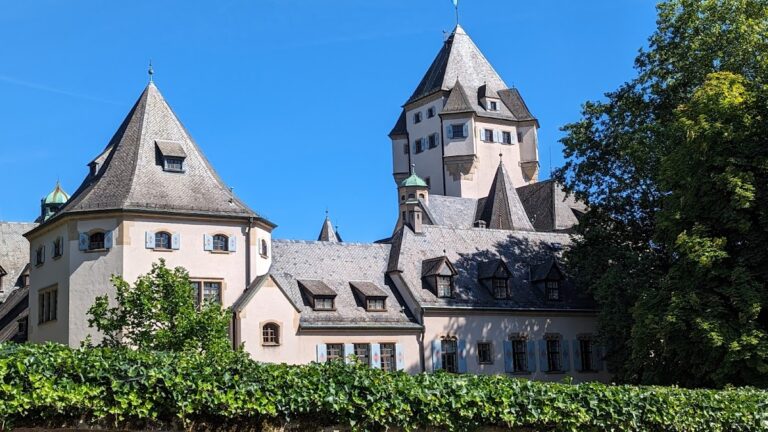Larochette Castle: A Medieval Fortress in Luxembourg
Visitor Information
Google Rating: 4.4
Popularity: Medium
Google Maps: View on Google Maps
Official Website: chateaularochette.lu
Country: Luxembourg
Civilization: Medieval European
Remains: Military
History
Larochette Castle stands on a sandstone promontory above the White Ernz valley in Larochette, Luxembourg. Its earliest construction dates to the late 11th and early 12th centuries, with written records confirming its existence by 1176. The castle was built by medieval European nobility to control and defend the surrounding territory, taking advantage of the steep rock slopes for natural protection. Its location near important trade routes and the Ernz river made it valuable for economic activities such as fishing and milling.
In the 14th century, the Felser family rose to prominence at Larochette, especially under Johann II of Fels. Johann II was a loyal vassal to the House of Luxembourg and held several court offices, marking the castle as a center of regional power. Ownership of the castle became complex as it was divided among family members and allied noble houses, particularly the Homburg family, through marriages and inheritance. This led to shared control and co-ownership arrangements that lasted for centuries.
By the late 14th century, Arnold von Pittingen acquired a new palace within the castle grounds through financial dealings. He built a chapel dedicated to Saint Peter of Milan, consecrated in 1386. This palace later passed to the Criechingen family by marriage, adding another noble lineage to the castle’s history. Despite these developments, the castle’s divided ownership contributed to its gradual decline.
In 1565, a major fire severely damaged Larochette Castle. Attempts by heirs to restore the complex were unsuccessful, and the castle fell into ruin. Over time, stones from the site were removed for other uses, accelerating its decay. The castle remained in this state until the Luxembourg state purchased the ruins in 1979. Since then, restoration and archaeological work have uncovered earlier fortifications nearby, including late Celtic defenses dating back to around 5000 BCE.
A local legend is connected to a well inside the castle’s kitchen. It tells of a lady of the castle and her child who survived a siege by accessing water through this well. Another story involves the Verlorenkost watchtower, named after a cook who supposedly spilled food there. These tales reflect the castle’s long-standing place in local memory and folklore.
Remains
Larochette Castle is built on a sandstone spur about 150 meters above the White Ernz valley. The site is divided by a deep natural ditch and accessed from the west through a large fortified courtyard. The main building is enclosed by a partially ruined stone wall, reflecting typical medieval defensive construction using local sandstone.
Within the castle grounds, five noble houses were constructed during the late medieval period. Among them, the Homburg House, built around 1350, likely served two married couples in separate sections. It was destroyed in the 1565 fire but has been partially stabilized and restored since the 1980s. The Criechingen House, dating from about 1385, is the only fully restored building on the site. It has three floors and a cellar, connected by a five-story staircase linking small chambers and storage rooms.
The ground floor of the Criechingen House contains a bakery and kitchen. The bakery oven’s chimney is notable for its unusual design: instead of a straight vertical flue, it bends halfway and runs horizontally outward. Above this horizontal section lies the lord’s sleeping chamber. A two-meter-wide well inside the kitchen provides access to a natural spring, which is central to a local legend about the castle’s lady and her child during a siege.
The castle grounds also include the Verlorenkost watchtower on the southern side. Its name comes from a legend about a cook who spilled food there. Archaeological investigations have used photogrammetry and excavations to study the site, revealing late Celtic fortifications near the original keep. Some basements and the original tower remain unexcavated. The ruins and restored buildings stand as preserved evidence of the castle’s medieval past.





